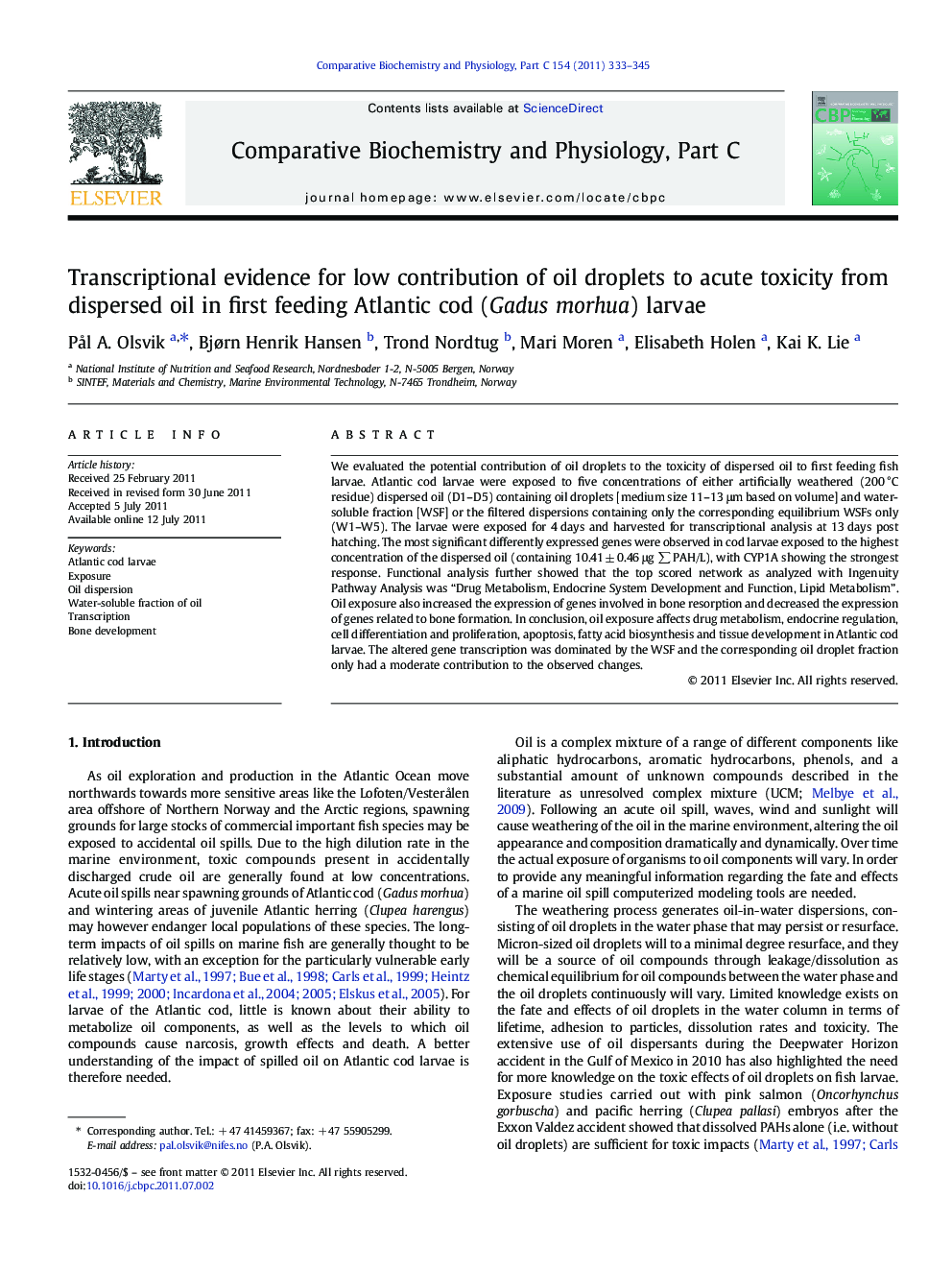| Article ID | Journal | Published Year | Pages | File Type |
|---|---|---|---|---|
| 10821694 | Comparative Biochemistry and Physiology Part C: Toxicology & Pharmacology | 2011 | 13 Pages |
Abstract
We evaluated the potential contribution of oil droplets to the toxicity of dispersed oil to first feeding fish larvae. Atlantic cod larvae were exposed to five concentrations of either artificially weathered (200 °C residue) dispersed oil (D1-D5) containing oil droplets [medium size 11-13 μm based on volume] and water-soluble fraction [WSF] or the filtered dispersions containing only the corresponding equilibrium WSFs only (W1-W5). The larvae were exposed for 4 days and harvested for transcriptional analysis at 13 days post hatching. The most significant differently expressed genes were observed in cod larvae exposed to the highest concentration of the dispersed oil (containing 10.41 ± 0.46 μg â PAH/L), with CYP1A showing the strongest response. Functional analysis further showed that the top scored network as analyzed with Ingenuity Pathway Analysis was “Drug Metabolism, Endocrine System Development and Function, Lipid Metabolism”. Oil exposure also increased the expression of genes involved in bone resorption and decreased the expression of genes related to bone formation. In conclusion, oil exposure affects drug metabolism, endocrine regulation, cell differentiation and proliferation, apoptosis, fatty acid biosynthesis and tissue development in Atlantic cod larvae. The altered gene transcription was dominated by the WSF and the corresponding oil droplet fraction only had a moderate contribution to the observed changes.
Related Topics
Life Sciences
Biochemistry, Genetics and Molecular Biology
Biochemistry
Authors
Pål A. Olsvik, Bjørn Henrik Hansen, Trond Nordtug, Mari Moren, Elisabeth Holen, Kai K. Lie,
